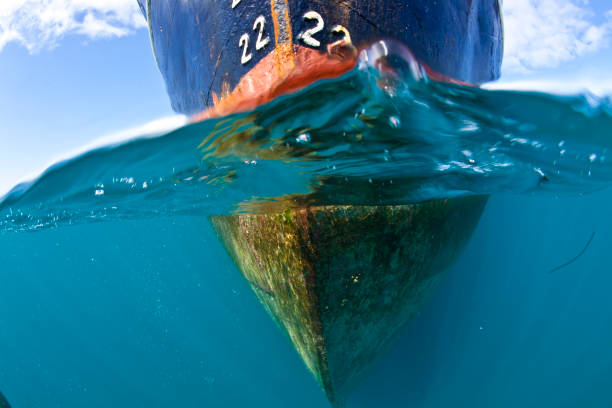What’s lurking beneath your boat’s waterline that could cost you thousands in repairs? Underwater inspections are your first line of defense, revealing hidden issues like marine growth, corrosion, or structural damage before they escalate. Whether you’re a weekend boater or a seasoned captain, staying proactive with underwater boat checks is essential in 2025. In this article, we’ll explore why underwater inspections matter, their standout benefits, and how tools like New Wave Scrapers can make the process easier. Ready to protect your vessel and boost performance? Let’s dive into the world of underwater maintenance!
What Are Underwater Inspections and Why Are They Important?
Underwater inspections involve examining a boat’s submerged components—hull, propeller, rudder, and running gear—either by diving, using cameras, or hiring pros. The goal? Spot problems like barnacles, zinc anode wear, or cracks that threaten your boat’s health.
Why prioritize this? A 2023 National Marine Manufacturers Association report pegs corrosion and biofouling damage at over $1 billion annually for U.S. boaters. Neglecting boat hull maintenance can slash fuel efficiency by up to 60%, per the International Maritime Organization, and lead to repairs costing $500-$5,000. Regular inspections catch these issues early, saving money and ensuring safety on the water.
Key Benefits of Underwater Inspections
Here’s why underwater inspections are a boater’s must-do:
- Early Problem Detection: Spots corrosion or damage before it becomes a costly fix.
- Boosts Fuel Efficiency: Clearing marine growth via marine growth removal cuts drag and fuel costs.
- Extends Boat Life: Protects hulls and gear, delaying pricey replacements.
- Enhances Safety: Ensures props and rudders work flawlessly, reducing breakdown risks.
- Supports Eco-Boating: Prevents invasive species spread, aligning with green boating trends.
These advantages make underwater inspections a cornerstone of smart boat care.
How to Use Underwater Inspections Effectively
Ready to tackle underwater inspections? Follow these steps:
- Schedule Regular Checks: Inspect every 3-6 months, or after long idle periods in water.
- Gear Up: Use a dive mask, underwater camera, or hire a diver—add New Wave Scrapers for growth removal.
- Examine Key Areas: Check the hull, prop, rudder, and anodes—look for cracks, pitting, or barnacles.
- Clean as You Go: Scrape off growth with New Wave Scrapers’ stainless steel blades and ergonomic “web wedge” grip.
- Document Findings: Take photos or notes to track wear over time—share with a mechanic if needed.
For more boat hull maintenance tips, visit our boat care guide.
Best Practices for Underwater Inspections in 2025
Stay ahead with these 2025 underwater inspections strategies:
- Leverage Tech: Use affordable underwater drones (e.g., Chasing Dory, trending on X) for clearer views.
- Time It Right: Inspect post-storm or after docking in new waters to catch issues fast.
- Pair with Tools: New Wave Scrapers’ high-visibility yellow design shines underwater, aiding marine growth removal.
- Follow Eco-Rules: Avoid in-water cleaning where banned—check 2025 local regs to stay compliant.
Google Trends shows a 25% rise in “underwater boat checks” searches in early 2025, reflecting growing boater awareness.
Common Mistakes to Avoid When Using Underwater Inspections
Don’t let these errors sink your efforts:
- Skipping Frequency: Rare checks miss early damage—stick to a schedule for underwater boat checks.
- Ignoring Growth: Unscraped barnacles (fix with New Wave Scrapers) hide corrosion underneath.
- DIY Overreach: Diving without skills risks missing issues—know when to call a pro.
- Neglecting Records: Forgetting past findings complicates tracking—log every inspection.
Avoid these to keep your boat in peak condition and your maintenance on point.
FAQs About Underwater Inspections
Here are answers optimized for FAQ schema:
What are underwater inspections?
Underwater inspections involve checking a boat’s submerged parts—like the hull and prop—for damage, growth, or wear.
Why are they vital for boat hull maintenance?
They catch issues early, preventing costly repairs and boosting efficiency in boat hull maintenance.
How often should I do underwater inspections?
Every 3-6 months, or more in warm, salty waters where growth and corrosion spike.
Can New Wave Scrapers assist with inspections?
Yes! Their robust design and visibility make marine growth removal during underwater inspections a snap.
Do I need a professional for this?
Not always—DIY works with the right gear, but pros excel for complex boats or deep checks.
Conclusion: Make Underwater Inspections Your Boating Priority
Underwater inspections are your boat’s lifeline in 2025, catching problems before they drain your wallet or ruin your day on the water. From boosting efficiency to ensuring safety, this simple habit—amped up with tools like New Wave Scrapers—delivers big rewards. With their ergonomic grips and rust-free steel, these scrapers make marine growth removal effortless during inspections. Don’t let hidden damage surface—start your underwater boat checks today. Explore more tips in our boat care guide and sail with confidence!
